Sound Performance Lab Passeq 2595 User manual
- Category
- Toy parts
- Type
- User manual
This manual is also suitable for

Manual
Passive Equalizer with 120 V Makeup Amplifiers
Passeq
Model 2595
-
.
'
°
.
)
'
)
'
.
'
°
.
)
'
.
)
'
°
)
'
-
'
°
-
.
'
L
L
L
L
L
L
L
L
L
L
L
L
L
L
-
'
L
L
L
L
L
L
L
L
L
L
L
L
L
L
L
L
L
L
L
L
L
L
L
L
L
L
L
L
L
L
)
'
#
P
P
T
U
2
$
V
U
°
E
#
#
P
P
T
U
E
#
#
P
P
T
U
E
#
#
P
P
T
U
E
#
$
V
U
°
E
#
$
V
U
°
E
#
4PVOE1FSGPSNBODF-BC
0
V
U
Q
V
U
E
#
-
.
'
°
.
)
'
)
'
.
'
°
.
)
'
.
)
'
°
)
'
-
'
°
-
.
'
L
L
L
L
L
L
L
L
L
L
L
L
L
L
-
'
L
L
L
L
L
L
L
L
L
L
L
L
L
L
L
L
L
L
L
L
L
L
L
L
L
L
L
L
L
L
)
'
#
P
P
T
U
2
$
V
U
°
E
#
#
P
P
T
U
E
#
#
P
P
T
U
E
#
#
P
P
T
U
E
#
$
V
U
°
E
#
$
V
U
°
E
#
0
V
U
Q
V
U
E
#
.PEFM
1BTTJWF
&RVBMJ[FS
1BTTFR
7(BJO4UBHFT

2
Passeq
Version 1.0 – 7/2006
Designer: Wolfgang Neumann
This user's guide contains a description of the product. It in no way represents a guarantee of
particular characteristics or results of use. The information in this document has been care-
fully compiled and veried and, unless otherwise stated or agreed upon, correctly describes
the product at the time of packaging with this document.
Sound Performance Lab (SPL) continuously strives to improve its products and reserves the
right to modify the product described in this manual at any time without prior notice. This
document is the property of SPL and may not be copied or reproduced in any manner, in part
or fully, without prior authorization by SPL.
SPL electronics GmbH
Sohlweg 80
41372 Niederkruechten
Germany
Tel. +49 (0)2163 983 40
Fax +49 (0)2163 983 420
Email: info@soundperformancelab.com
Web: www.soundperformancelab.com
CE Declaration of Conformity
Manufacturer: SPL electronics GmbH
Type of Equipment:Audio Signal Processor
Product: Passeq, Model 2595
Compliance Engineer: Wolfgang Neumann
Test Basis: EN50081-1:1992, EN50082-1:1992, EN60065:1993, EN61000-3-3:1995,
EN60065:2002, EN55013:2001, EN55020:2002, EN61000-3-2:2000, 73/23 EWG; 93/68 EWG.
We herewith declare, that the construction of the Passeq, Model 2595, is in compliance with
the standards and regulations mentioned above.
Notes on environmental protection
At the end of its operating life, this product must not be disposed of with regular
household waste but must be returned to a collection point for the recycling of
electrical and electronic equipment. The “wheelie bin“ symbol on the product,
user‘s manual and packaging indicates that. The materials can be re-used in
accordance with their markings. Through re-use, recycling of raw materials,
or other forms of recycling of old products, you are making an important contribution to the
protection of our environment. Your local administrative ofce can advise you of the respon-
sible waste disposal point.
WEEE Registration: 973 349 88
© 2008 SPL electronics GmbH. All rights reserved. Names of other companies and their products are
trademarks of their respective owners.
Manual Passeq, Model 2595

3
Passeq
Important Safety Information ................................................................ 4
Hook Up ........................................................................................ 5
Introduction .................................................................................... 6
Unique Features, Special Features ........................................................... 6
Advantages of Passive Filtering, 72 passive Filters with 120 V Makeup Ampliers,
Filter Types, Single Core Coils, Peak and Shelving Filters ................................... 7
120 V Makeup Ampliers, SPL SUPRA Op-Amps ............................................. 8
Lundahl Transformers, Other Features, Conclusion ......................................... 9
Rear Panel ...................................................................................... 1 0
Rear Panel, XLR Pin Wiring .................................................................... 10
Connections .................................................................................... 11
Power and Signal Connections ................................................................ 11
Operation ...................................................................................... 11
Power, Channel Switches, Layout of Operational Elements,
The most powerful passive EQ system ever made ........................................... 11
One Coil per Filter, one Core per Coil, Allocation of Frequencies,
Frequency Table/per Band .................................................................... 1 2
Table: Allocation of Frequencies .............................................................. 1 3
LF-LMF Cut and LF Boost, MF-MHF Cut and LMF-MHF Boost ................................ 1 4
MHF-HF Cut and HF Boost, HF Boost Q Settings with the Proportional Q Principle,
MHF-HF Cut, Output Control .................................................................. 1 5
Recommendations on using Equalizers ...................................................... 1 6
Basic Approaches and Working Techniques, EQ Yin & Yang ................................. 1 6
First control levels, then apply EQ, First cut, then boost,
Reducing bleed from other instruments or noise outside an instrument‘s
frequency range, Reducing bleed within an Instrument‘s frequency range,
Boosting harmonic frequency levels, Boosting fundamental levels ........................ 1 7
Cutting fundamental levels, Emphasis of an instrument‘s main frequencies,
In the mix—or not?, Splitting frequency bands to reduce masking effects,
Complementary ltering ....................................................................... 1 8
An overview of frequencies and examples for possible processing ........................ 1 9
Classical instruments and their frequencies ................................................. 2 0
The Basics of Frequency Filtering ............................................................ 2 1
Frequency and Energy, Tone and Sound, Sound Correction and Sound Design ........... 2 1
Frequency Filters, Filter Types, Shelf Filters, Peak Filters ................................... 2 2
Bandwidth, Equalizer, Passive EQs, Schematic and block diagrams on passive lters ..... 2 3
Active EQs, Parametric EQs, Graphic EQs .................................................... 2 4
Power Supply .................................................................................. 2 5
Specications ................................................................................. 2 5
Guarantee & Product Registration .......................................................... 2 6
Copy Master: Recall Settings ................................................................. 2 7
Contents

4
Passeq
Please note and retain this information. Carefully read and follow all of the safety and oper-
ating instructions before you use the machine. Be doubly careful to note and follow the warn-
ings and special safety notices.
Connections: Only use the connections as described. Other connections can lead to health
risks and equipment damage.
Water and Humidity: Do NOT use this machine anywhere near water (for example near a wash
basin or bath, in a damp cellar, near swimming pools, or the like). In such cases there is an
extremely high risk of fatal electrical shocks!
Insertion of Foreign Objects or Fluids: NEVER allow a foreign object through any of the
machine‘s chassis openings. You can easily come into contact with dangerous voltage or cause
a damaging short circuit. NEVER allow any uids to be spilled or sprayed on the machine. Such
actions can lead to dangerous electrical shocks or re!
Opening the Machine: Do NOT open the machine housing, as there is great risk you will
damage the machine, or – even after being disconnected – you may receive a dangerous elec-
trical shock!
Electrical Power: Run this machine ONLY from sources which can provide proper power at the
prescribed rating. When in doubt about a source, contact your dealer or a professional electri-
cian. To be sure you have isolated the machine, do so by disconnecting the power cord from
your wall connection. Be sure that the power cord plug is always accessible. When not using
the machine for a longer period, make sure to unplug it from your wall power socket.
Power Cord Protection: Make sure that your power cord is arranged to avoid being stepped
on or any kind of crimping and damage related to such event. Do not allow any equipment or
furniture to crimp this power cord.
Power Connection Overloads: Avoid any kind of overload in connections to wall sockets,
extension or splitter power cords. Always keep manufacturer warnings and instructions in
mind. Overloads create re hazards and risk of dangerous shocks!
Lightning: Before thunderstorms or other severe weather, disconnect the machine from wall
power (but to avoid life threatening lightning strikes, not during a storm). Similarly, before
any severe weather, disconnect ALL the power connections of other machines and antenna
and phone/internet cables which may be interconnected so that no lightning damage or over-
load results from such secondary connections.
Air Circulation: Chassis openings offer ventilation and serve to protect the machine from
overheating. NEVER cover or otherwise close off these openings. NEVER place the machine
on a soft surface (carpet, sofa, etc.). Make sure to provide for a mounting space of 4-5 cm/2
inches when mounting the machine in racks or cabinets.
Repairs: Unplug the machine and immediately contact a qualied technician when you think
repairs are needed – or when moisture or foreign objects may accidentally have gotten in to
the housing, or in cases when the machine may have fallen and shows any sign of having been
damaged. This also applies to any situation in which the machine has not been subjected
to any of these unusual circumstances but still is not functioning normally or its perfor-
mance is substantially altered.
In cases of damage to the power cord or its plug, rst consider turning off the main circuit
breaker before unplugging the power cord.
Operate the controls and switches only as described in the manual. Incorrect adjustments
outside safe parameters can lead to damage and unnecessary repair costs. Never use the
switches or level controls to effect excessive or extreme changes.
Replacement/Substitute Parts: Be sure that any service technician uses original replacement
parts or those with identical specications as the originals. Incorrectly substituted parts can
lead to re, electrical shock, or other dangers, including further equipment damage.
Safety inspection: Be sure always to ask a service technician to conduct a thorough safety
check and ensure that the state of the repaired machine is in all respects up to factory stan-
dards.
Cleaning: In cleaning, do NOT use any solvents, as these can damage the chassis nish. Use
a clean, dry cloth (if necessary, with an acid-free cleaning oil). Disconnect the machine from
your power source before cleaning.
Important Safety Information

5
Passeq
Be very careful to check that the rear chassis power selection switch is set to the correct
local line voltage position before using the unit (230 V position: 220-240 V, 115 V position:
110-120 V)! When in doubt about a source, contact your dealer or a professional electrician.
Before connecting any equipment make sure that any machine to be connected is turned off
(rear panel power switch). Follow all safety instructions on page 4.
Place the unit on a level and stable surface. The unit’s enclosure is EMC-safe and effectively
shielded against HF interference. Nonetheless, you should carefully consider where you place
the unit to avoid electrical disturbances. It should be positioned so that you can easily reach
it, but there are other considerations. Try not to place it near heat sources or in direct sunlight,
and avoid exposure to vibrations, dust, heat, cold or moisture. It should also be kept away
from transformers, motors, power ampliers and digital processors. Always ensure sufcient
air circulation by keeping a distance of 4-5 cm/2 inches to other units and to the sides of the
unit.
Rack Mounting
Be sure that both above and below the machine you maintain a distance of 1U (44mm/
1.5-2 inches) in order to eliminate electromagnetic or high frequency interference from other
equipment. Moreover, this will ensure adequate air circulation to prevent overheating. Do
NOT locate other machines that produce excessive heat below the Transducer. The rear side of
the machine should be properly supported – especially when transport is involved.
Warnings
DO NOT PLACE THE MACHINE IN SUCH A WAY THAT IT MIGHT COME INTO CONTACT WITH OR
SIT ON ANY FLUIDS. AVOIDING SUCH CONTACT WILL AVOID HAZARDS FROM FIRE, DANGEROUS
ELECTRICAL SHOCK OR MACHINE DAMAGE. DO NOT OPEN THE MACHINE. THE LIGHTNING
SYMBOL WITHIN A TRIANGLE WARNS YOU ABOUT UNINSULATED HIGH VOLTAGE INSIDE THE
TRANSDUCER AND THE POTENTIAL FOR DANGEROUS ELECTRICAL SHOCKS – WHICH CAN ALSO
OCCUR EVEN AFTER THE MACHINE HAS BEEN DISCONNECTED FROM A POWER SOURCE.
Symbols and Notes
ALSO IN THIS MANUAL A LIGHTNING SYMBOL WITHIN A TRIANGLE WARNS YOU ABOUT THE
POTENTIAL FOR DANGEROUS ELECTRICAL SHOCKS – WHICH CAN ALSO OCCUR EVEN AFTER
THE MACHINE HAS BEEN DISCONNECTED FROM A POWER SOURCE.
AN EXCLAMATION MARK (!) WITHIN A TRIANGLE IS INTENDED TO MAKE YOU AWARE OF
IMPORTANT OPERATIONAL ADVICE AND/OR WARNINGS THAT MUST BE FOLLOWED. BE
ESPECIALLY ATTENTIVE TO THESE AND ALWAYS FOLLOW THE ADVICE THEY GIVE.
The symbol of a lamp directs your attention to explanations of important functions or applica-
tions.
Attention
Do not attempt any alterations to this machine without the approval or supervision of SPL
electronics GmbH. Doing so could nullify completely any and all of your warranty/guarantee
rights and claims to user support.
Hook Up

6
Passeq
SPL Passeq—the most powerful passive Equalizer ever made
Unique Features
• The most powerful passive EQ ever made—72 (!) passive lters per channel in one EQ.
• 120 V makeup ampliers based upon SPL SUPRA-OPs with 150 dB dynamic rage and
200 V/ms slew rate.
• Individual coils per lter.
• Single core coils, which means that every one is wound individually on its own dedicated
core. This excludes sonic degradation from mutual inuences while at the same time
improving THD values.
Special Features
• Individual design and component specicity for each lter.
• Custom made coils for critical mid-frequency ranges.
• Boost and cut crossovers mesh perfectly so that with the high number of frequencies one
can dependably command the most elaborate set of response curves that to date any
passive EQ has offered.
• Transformers from Lundahl with perfectly matched sonic characteristics provide for
balanced I/O stages.
Introduction

7
Passeq
Advantages of Passive Filtering
• Typically coil inductance in virtually all active lters is achieved through simulation. True
passive coil lters, on the contrary, can only deliver the genuine, characteristic sound asso-
ciated with inductive components.
• Inherent distortion elements of active lters are ruled out by passive lter design.
• For any number of reasons stemming from design and component advantages over active
lters, passive lters achieve a very natural aural quality and through their harmonic treat-
ment (THD, distortion, phase response, etc.), offering at the very least, a clear sonic alter-
native, which our ears often perceive as an extremely attractive one.
• All passive lter components (variable resistor, capacitor and coil) work in concert to
produce this beautiful sonic result. An important part of this process is played by coil
and condenser loading and saturation characteristics. The resulting difference in latency
from characteristically extremely fast reaction of active lters provides for more pleasant,
musical sonic qualities. We tend to perceive these attributes in terms of an increased
suppleness and transparency, with perceptibly improved, silky highs and robust basses.
72 passive Filters with 120 Volt Makeup Ampliers
With 72 passive lters (36 x boost, 36 x cut per channel), the Passeq surpasses all previous
designs of this type by a wide margin. Each channel is divided into three cut and three boost
bands, each offering 12 switchable frequency ranges. The cut and boost ranges are not iden-
tical; crossovers are designed to work with like a precise mechanic cogwheel so as to allow the
engineer access to the largest possible number of optimal, wide-band S-curves with variable
slopes. A further noteworthy Passeq feature is its individual sonic adaptation of each induc-
tive lter through separate coil/condenser/resistor combinations: In stark contrast to earlier
lter design and construction, each Passeq lter is optimized for the frequency assigned. To
insure the best possible signal warmth, richness and musicality in processing, coils for critical
voice frequencies are custom-made for the Passeq. This achieves the widest possible range
and tonally appealing sound color palette from any passive EQ.
Filter Types
The Passeq employs two distinct lter types: One of these functions much like traditional
shelving lters, while the other, as a peak lter, and together, they provide the combined char-
acteristics of wide-band control in low and high ranges with more specic frequency range
control in mids. This selection minimizes mutual inuences between low, mid and high bands
while providing a more selective control in the mids is often useful.
Single Core Coils
Until now design approaches have involved individually wound coils, but multiple coils have
nonetheless been placed on a single core. The Passeq design places each coil on separate
cores. This eliminates any possible unwanted mutual inuence transmitted through common-
core windings and thus, among other improvements, results in better THD values.
Peak and Shelving Filters
Mid boost and cut, as well as HF boost lers have been set up in a peak (bell) conguration,
while the hi cut, low cut and low boost lters function in a shelving conguration. The HF
boost band offers variable values from Q=1 to 0.1.
Introduction

8
Passeq
120 Volt Makeup Ampliers
With passive ltering comes an unavoidable drop in signal level that requires makeup ampli-
cation, and with the Passeq, here SPL’s extraordinary Supra-OPs, with their unique analog
120-volt technology, come into play. With a 116 dB signal-to-noise ratio and +34 dB of head-
room, the SUPRA-OPs offer a stunning 150 dB dynamic range, placing them in an unsurpassed
leadership position in either analog or digital signal processing.
The tremendously fast SUPRA slew rate of 200V/ms allows for a highest possible precision
in lter output signals, particularly in the all-important arena of transient response. These
ampliers effortlessly and without coloration or degradation, transmit all the desired lter
characteristics and sonic results an engineer has sought out and in the process, pushing
beyond the limits of what has been technically possible to now.
SPL SUPRA Op-Amps
The specially designed and for-audio optimized SUPRA-OPs are constructed in three stages
with high performance, extremely low noise transistors from the HF technology sector.
Input Stages of the SUPRA Components
The development of the SUPRA components focused on high loop amplication, extremely
low phase shifting and THD, combined with maximum amplication and a frequency response
up to 100 kHz.
A main and obvious advantage of the discrete SUPRA components is the exclusion of parts
often found in industrially manufactured standard components that are not necessary for
audio processing.
The SUPRA input stages are designed as balanced differential stages and comprise six
matched high voltage transistors switched in parallel.The concept of the input stage is based
on the established principle that currents of not correlated noise sources in shunt circuits
add up—which decreases the overall noise of the input circuitry. The input stages are free of
coupling capacitors to exclude additional capacitor noise. The balanced operational voltage
of +/-60V is delivered from a linear -80 dB high voltage power supply.
Intermediate Stages of the SUPRA Components
The audio signal is further routed to a differential stage and from there through further
processing stages to the Class-A output stage. All passive components have been tested to
yield the highest possible delity.
Output Stages of the SUPRA Components
Extremely low noise, high voltage output transistors are set up with a high quiescent current
and excess heat is dissipated via special cooling plates.
Introduction

9
Passeq
Lundahl Transformers
The Swedish rm of Lundahl is recognized world wide for the superior sonic qualities of its
hand made transformers. SPL has used Lundahl transformers for many years, typically for
optional in- and output stages of various products. In the case of the Passeq, there is no
question of whether solid state or transformer-based input and output stages are the better
choice: Because of their excellent and similar sonic qualities, Lundahl transformers are a clear
choice to complement to the Passeq’s EQ circuitry.
I/O transformers are classical analog components in many “vintage” machines. In addition
to increased operational safety due to the isolation from incidental I/O electrical interference
they offer, transformers also introduce their own element of sonic “warmth” that is today too
often inadequately attributed solely to tube circuitry.
The sonic quality from Passeq’s Lundahl transformers may be described in comparison to
straight electronic I/O circuitry as: Bass and fundamentals are rounder, fuller, and exhibit
more “punch”, while higher frequencies and harmonics sound silkier and more present, yet
without leaving the impression of being overly emphasized or singled out. Moreover, they add
the subtle impression that mix elements are better localized.
The reasons for this are the tendency of transformers to reduce uneven harmonics (which
often give the impression of harshness in a sonic canvas) and to act with some latency
compared to electronically balanced stages. In particular, fundamentals and low frequencies
benet from this.
Other Features
XLR contacts from Switchcraft serve as In and Output connections, while controls and switches
are from the manufacturers Elma and ALPS (including ALPS’ “Big Blue” with 41 steps). The
internal, fully analog power supply features a generously proportioned toroidal transformer
that offers switchable, 110-120 Volt/60 Hz or 220-240Volt/50 Hz functions.
Conclusion
The Passeq represents the most powerful passive EQ system to date and fullls the highest
expectations in all areas of audio processing, from recording through mixing to mastering.
Introduction

10
Passeq
Rear Panel
1JO8JSJOH9-34PDLFUT
(/%IPUDPME
"7*43*426&%&$)0$c-&$53*26&/&1"40673*3
3*4,0'&-&$53*$4)0$,
%0/0501&/
$"65*0/
"$.BJOT*OQVU
"$.BJOT*OQVU
4PVOE1FSGPSNBODF-BC
/JFEFSLSDIUFO(FSNBOZ
XXXTPVOEQFSGPSNBODFMBCDPN
7°7)[N"TMPX
7°7)["TMPX
4FSJBM/VNCFS
7PMUBHF4FMFDUPS
7PMUBHF4FMFDUPS
7°7)[
7°7)[
7°7)[
7°7)[
'VTF3BUJOH
'VTF3BUJOH
."%&*/(&3."/:
8"3/*/(
503&%6$&3*4,0''*3&03&-&$53*$4)0$,%0
/05&9104&5)*46/*5503"*/03.0*4563&
%*4$0//&$5."*/4#&'03&3&.07*/($07&3
5)*4&26*1.&/5.645#&&"35)&%
3JHIU$IBOOFM
3JHIU$IBOOFM
*OQVU
*OQVU
0VUQVU
0VUQVU
-FGU$IBOOFM
-FGU$IBOOFM
*OQVU
*OQVU
0VUQVU
0VUQVU
(/%
-*'5
(/%
9-31JO8JSJOH1JO(/%1JO)PU1JO°$PME
7
(/%
-*'5
(/%
The GND Lift switch separates internal ground from
chassis ground to eliminate ground loop humming.
Usually the GND lift should be deactivated (switch down).
7PMUBHF4FMFDUPS
7PMUBHF4FMFDUPS
7°7)[
7°7)[
7°7)[
7°7)[
7
Power switch and voltage
selector: Please refer to
the notes on the next page.

11
Passeq
Power and Signal Connections
Be very careful to check that the rear chassis power selection switch is set to the correct local
line voltage position (either 230 or 115 volts) before using the unit!
Before connecting any equipment make sure that any machine to be connected is turned off
(on the Passeq rear panel the power switch must be pushed down).
An AC power cord is included for connection to the standard 3-prong IEC connector. The trans-
former, power cord and IEC connector are VDE, UL and CSA approved. The AC fuse is rated at
500 mA for 220/240 V and 1 A for 110/120 V.
Power
The Passeq is turned on and off with the rear Power switch. The blue LED in the center of the
front indicates operating status.
Channel Switches
Two illuminated switches in the center of the front activate or bypass the left or right
channel.
Layout of Operational Elements
nitially one might be struck by the circular arrangement of the Passeq’s control elements. As
unusual as this rst appears, the more understandable and clearer this layout becomes when
one looks closer.
Along with the fact that we simply like this design from an aesthetical view, this layout makes
even more sense with respect to the idea of the passive EQ concept itself: In a passive design,
lters for boosting and cutting a frequency range are physically separated from each other.
Reecting this fact, the elements left of the central output control perform level cuts, while
controls to the right of this central regulator serve as signal boost controls. Cut and boost
switches are positioned next to the appropriate frequency band selector and frequency
bands are arranged from low to high from the standpoint of both physical and frequency
range layout—all in all a clear overall functional picture though without much in the way of
boring routine.
The most powerful passive EQ system ever made
The Passeq is the rst passive EQ which provides three separate frequency ranges for both
boost and cut stages. One famous, if not the most famous, passive design was the Pulteq EQ
from the decades of the 1950’s and 60’s. This EQ sported two frequency bands (low and high
frequencies, or LF and HF), and had only a few switchable frequencies to offer. In contrast,
the Passeq has 12 switchable frequencies per band, totaling 36 boost and 36 cut frequencies.
Boost and cut frequencies are NOT identical, thus the resultant 72 frequencies per channel
offer an enormous choice for the most elaborate EQ curves (please refer to the next chapter,
“Frequency Layout”).
The Passeq offers for the rst time passive lter control possibilities extending throughout
the relevant audio frequency range—and that with an unheard of abundance of lter choices.
Connections
7PMUBHF4FMFDUPS
7PMUBHF4FMFDUPS
7°7)[
7°7)[
7°7)[
7°7)[
7
"$.BJOT*OQVU
"$.BJOT*OQVU
1BTTJWF
&RVBMJ[FS
1BTTFR
7(BJO4UBHFT
Operation

12
Passeq
One Coil per Filter, one Core per Coil
Each Passeq lter is individually constructed for its intended frequency, that is, each coil,
condenser and variable resistor (var. resistor=boost or cut control) ensemble is sonically
tuned to its intended frequency range. Thus each lter has its own musically sensible audio
color appropriate to its own frequency.
In turn, each coil is also wound on its own separate core to avoid mutual and degrading inu-
ences which stem from past designs where multiple coils were wound on a single core. Not
the least, the construction of each lter on its own particularly core also provides for excel-
lent THD values.
Allocation of Frequencies
One of the greatest Passeq design challenges was in determining the choice of frequencies,
which in contrast to parametric EQ designs, are xed or nonadjustable. One could accept
standardized values from such as the so-called ISO frequencies, but such measurements
stem too much either from conventional measurement standards or those from room correc-
tions rather than choices of what may be musically more sensible.In assigning the Passeq‘s
frequencies it was inevitable that we would rely on the nearly 30 years of experience of SPL’s
chief developer, audio engineer and musician, Wolfgang Neumann.
To enhance further our achieving this musical objective many audio experts and musicians
were consulted regarding their favored frequencies. Among the many, David Reitzas, Michael
Wagener, Bob Ludwig, Ronald Prent and Peter Schmidt offered valuable advice. From this
point of departure we managed to determine that there is denite agreement among profes-
sionals about their preferred musical frequencies, and these differ clearly from the standard
ISO choices.
The results also showed that the closely meshed boost and cut frequencies are important
and sensible. Through them one can on the one hand focus more precisely on a certain
frequency, and on the other, offer the option of inuencing the Q factor (which is typically
rather small in passive designs) by creating so-called S curves. An Example: Assume you
wish to boost in the mids around 320 Hz, an instrument or voice level while at the same time
avoiding a boost to the frequency range below it due to the small Q factor (high bandwidth)
of the lter, and perhaps even lower it. In this case, let’s say you choose the LMF-MHF boost
band and increase the chosen (320 Hz) frequency range by about 3 dB. At the same time, you
chose a 4 dB reduction in the LF-LMF cut band. The close proximity of the chosen frequencies
allows you achieve an increase in the slope between the two. This is “S slope EQ-ing” at its
best, and in this discipline, the Passeq is a world champion in both options and results.
Frequency Table/per Band
LF
Boost
LF-LMF
Cut
LMF-MHF
Boost
MF-MHF
Cut
MHF-HF
Boost
HF
Boost
Frequenz Frequenz Frequenz Frequenz Frequenz Frequenz
10 30 220 1k 580 5k
15 42 320 1k2 780 6k
18 60 460 1k6 1k2 7k
26 95 720 1k9 1k8 8k6
40 140 1k3 2k4 2k5 10k
54 180 1k8 2k9 3k9 12k
80 270 2k3 3k5 5k2 13k
120 400 2k8 4k3 7k8 15k
180 600 3k3 5k 11k 16k
240 900 4k 6k 14k 17k
380 1k2 4k5 7k5 18k 18k
550 1k9 4k8 8k6 19k5 20k
Operation

13
Passeq
Cut LF-LMF Cut MF-MHF Cut MHF-HF Boost LF B. LMF-MHF Boost HF
20k
19k5
18k 18k
17k
16k
15k
14k
13k
12k
11k
10k
8k6 8k6
7k8
7k5
7k
6k 6k
5k2
5k 5k
4k8
4k5
4k3
4k
3k9
3k5
3k3
2k9
2k8
2k5
2k4
2k3
1k9 1k9
1k8 1k8
1k6
1k3
1k2 1k2 1k2
1k
900
780
720
600
580
550
460
400
380
320
270
240
220
180 180
140
120
95
80
60
54
42
40
30
26
18
15
10
Operation
Table: Allocation of Frequencies

14
Passeq
-
'
#
P
P
T
U
E
#
LF-LMF Cut and LF Boost
The low cut frequency range extends from 30 Hz to 1.9 kHz and will be ref erred to in this text
as LF-LMF (Low to Low-Mid frequencies ). In con trast, the low boost (LF Boost) band en com-
passes a range of 10 Hz to 550 Hz. The maximum available in crease in this LF boost band is
(+)17 dB, while the maximum reduc tion of the LF-LMF cut band is (-)22 dB.
Optically these lter bands may be represented as having a shelving characteristic with an
6 dB slope. Passive lters do not allow for direct alteration of the slope gradient because this
quality is pre-determined by component selection and not, as with active lters, by a vari-
able value.
The lowest frequencies begin here with 10 Hz, then follow with 15, 18, 26, 40 Hz, and so on.
At this point one might think that such a lavish set of frequency choice in this range might be
a bit overdone, as there is acoustically a rather limited amount of audio material of any real
signicance below 26 Hz. However, these choices are anything but arbitrary. These frequen-
cies represent a consistent -3 dB point of a sloping down response curve. That is, the gentle
6 dB slope also allows frequencies above 10 Hz to be processed. As mentioned in other parts
of this text, special condenser/coil/resistor lter networks have been designed for each
frequency range. The choice of one or the other inductances produces differences in sonic
coloration even when limited differences between frequencies such as 10 Hz or 15 Hz play a
subordinate role. Along with this differing phase relationships may come into play and affect
tonal color. Because modern productions often demand a denite number of choices in an
engineer’s options for achieving an optimal result in bass emphasis, the Passeq has been
designed with a very complete set of low frequency options to insure realizing these goals.
MF-MHF Cut and LMF-MHF Boost
The midrange bands elevate the Passeq to a complete combination of lter options that
classic passive designs do not offer. Both midrange bands exhibit peak lter characteris-
tics, that is, when viewed from the boost band, the frequency curve appears as bell-shaped
slopes above and below the chosen frequency range. The slope or Q-value is, again, not
variable, but attuned through the choice and conguration of the passive lter‘s compo-
nents for a maximum in musical efciency, relying in the Passeq on its developer, Wolfgang
Neumann‘s years of musical experience. The middle bands‘ peak structure is chosen for a
clean separation of LF and HF bands. Were the choice here to be for a shelving lter design,
too many neighboring frequencies would be processed, with resulting undesirable inu-
ences extending into LF and HF bands. Along with this is the simple fact that a midrange
peak lter characteristic is accompanied by a more easily focused center point processing of
critical voice and instrument fundamental frequencies.
The MF-MHF cut band overlaps the LF-LMF cut band by approximately an octave, with its
lowest frequency extending from 1 kHz. The LF boost and LMF-MHF boost bands are set up in
a similar fashion, with the lowest LMF-MHF boost band frequency set at 220 Hz and thereby
1-1/2 octaves under the highest LF boost band frequency. The maximum values of the MF-
MHF cut and LMF-MHF boost band extend from -11.5 dB to +10 dB.
The overlapping band characteristics give a good idea of the available degree of precision
in frequency adjustment: For example, one can boost in the LMF-MHF boost band at 220 Hz
while in the LF boost band, 240 Hz can be followed by 320 Hz in the LMF-MHF boost band: The
next step could be at 380 Hz in the LF boost band, followed by 460 Hz in the LMF-MHF boost
band and 550 Hz in the LF boost band ...
Operational Elements
-
'
°
-
.
'
L
L
$
V
U
°
E
#
.
'
°
.
)
'
L
L
L
L
L
L
L
L
L
L
L
L
$
V
U
°
E
#
-
.
'
°
.
)
'
L
L
L
L
L
L
L
L
#
P
P
T
U
E
#

15
Passeq
MHF-HF Cut and HF Boost
Passeq’s high frequency bands have a different layout for the cut and boost ranges: The
MHF-HF cut band exhibits a (wide-band) shelving characteristic, while the HF boost band
exhibits a variable Q, peak lter characteristic.
As seen above, one can also note and intensication in choice of frequencies in the high
range. Here the same reasons apply as in prior cases: Individually designed and constructed
coil-condenser-resistor congurations result in slightly differing sonic characteristics. Thus
beginning at 10 kHz there are seven additional switchable frequencies. The available variable
Q (ranging from Q=0.1 to Q=1.0) allows the engineer access to an enormously exible range
in high frequency boost options.
HF Boost Q Settings with the Proportional Q Principle
With the proportional or variable Q principle, boost control settings would apply only if the
HF boost Q were to be set at Q=1.0 (control set fully clockwise). Were the value to be reduced
(thus increasing the bandwidth), the boost would also be reduced. This can lead to a situ-
ation wherein, for example, a HF boost Q setting of 0.1 and a boost of 3 dB would result in
effectively no audible boost in the chosen frequency—at this value the Q value resides at
about 0.3 dB. With this Q value, don’t hesitate to turn turn up the HF band boost control to
its full 12.5 dB setting—this results in an actual overall increase of around 3.5 dB. Narrower Q
settings, for example, to 0.6, result in further level boosts again.
The advantage of proportional Q as compared to constant Q designs rests with the musi-
cally superior way it functions. The wave energy which resides below the bell curve remains
essentially the same and in the process, retains the balance of high frequencies in relation to
the entire frequency spectrum as one experiments with varying Q values. While it is true that
one must think independently of the scaled HF boost dB values in such cases (because these
only apply to a value of 1), the result is a simpler, more musically sensible and worthwhile
way to work that does not require continual additional corrections.
MHF-HF Cut
The MHF-HF cut band is similar to a shelving lter that can reduce higher frequencies in a wide
bandwidth. It is appropriately wide, beginning with 580 Hz and extending to 19.5 kHz, a range
of over 5 octaves and overlapping the lowest, LF-LMF cut band by just about two octaves.
With it one can lower a very wide bandwidth and with the peak mid range lters further
reduce—or raise—specic ranges. The process can result in the creation of very interesting
curves. Here the maximum cut is -14.5 dB, while the maximum boost reaches +12.5 dB.
The Passeq is not limited to any one particular kind of application, and, for example, is
also especially well suited to processing individual instruments in recording sessions. In
such cases the wide downward reaching MHF-HF cut band may be play an exceptional role.
Individual instruments can easily be cut upwards, either to give them a more compact sound
or when higher frequencies might be supplied from different microphone—or because the
mix simply suggests it.
Output Control
The Output control serves as output level regulator. If boosts increase levels at the output,
they can be reduced again to the input level‘s value. (compare the block diagram “passive
lter at +18 dB boost” on page 21).
The proven “Big Blue” potentiometer from ALPS with 41 steps is employed here to ensure
precise control and minimum tolerances over both channels.
.
)
'
°
)
'
L
L
L
L
L
L
L
L
L
L
$
V
U
°
E
#
)
'
L
L
L
L
L
L
L
L
L
L
L
L
#
P
P
T
U
E
#
.
)
'
°
)
'
L
L
L
L
L
L
L
L
L
L
$
V
U
°
E
#
Operational Elements
0
V
U
Q
V
U
E
#

16
Passeq
In the arenas of recording and mixing one can generally distinguish between two main goals
in applying EQ: The rst is sound correction, or sound design through processing of indi-
vidual channels while the second may be improving their separation or presence in the mix.
In the overall recording process there may be deciencies due to technical problems, for
example, noise or bleeding of neighboring instrument sounds that detract from the natural
quality of the desired instrument.
Through frequency response characteristics of a microphone or phase shifts due to reec-
tions, energy at certain frequencies can be reduced or get lost, denigrating the original sound
quality of an instrument. EQ is probably the most important tool to combat these problem
areas. Moreover, an instrument‘s sound can also be accentuated or emphasized—to the
point that this becomes in its own right a creative sonic activity with a production made only
possible by the employment of EQs and their special characteristics.
Basic Approaches and Working Techniques
While we would never assume that in creative and artistic work there should be absolute
rules, and this also applies to work with EQ: There is no such thing as “The Voice” or “The
Kick Drum” or “The Piano”.
The following is thus offered strictly as a basic orientation or starting point for such work,
and should not be misconstrued as dogma or any other kind of absolute. Nonetheless, in
order to achieve sometimes hard-to-dene goals when applying EQ, it really is important to
be aware of and be able to use a few accepted basic musical and technical guidelines.
EQ Yin & Yang
This section, on “EQ Yin & Yang” reproduces thoughts and verbalizations by Bob Katz, whose
superb Focal Press book based on a series of lectures entitled, “Mastering audio, the art and
the science”, we highly recommend.
In Chinese philosophy, Yin and Yang describe unconditionally bound opposites within
some kind of unity, which in turn, both complement and conict with one other. This idea
also provides an insightful analogy to the understanding of the connection between music,
harmony, fundamentals and harmonics (please see also, “Basics of frequency ltering, Tone
and Sound”, beginning on page 19). This mutual bond and interaction between such oppo-
sites creates inevitable and mutual reac tions and repercussions in the other whenever some-
thing occurs to one.
Here are a few examples:
• A small reduction in the lower middle range around 250 Hz can have a similar effect as an
increase in the presence region of 5 kHz.
• Added energy in the very high region of 15-20 kHz can create the impression of having made
the bass and lower mids thinner.
• Adding warmth to a voice will reduce its mix presence.
Working with EQ and this Yin and Yang principal means ideally to consider always such implied
repercussions of work in one frequency—for example, that in working to enhance warmth,
that one might want to avoid losing presence.
Harshness in the upper middle to lower high range can be countered with more than one
approach: A harsh trumpet section may be improved through a reduction around 6-8 kHz,
oder with an increase at around 250 Hz. Both of these measures result in a warmer sound, but
the decision of which to use should depend on which of the two also works best in the entire
mix.
Moreover, one should never forget how easy it is, while working intensely with isolated
elements of a mix, to fall into the trap of forgetting how such elements can inuence, for
better or worse, the rest of the mix.
Recommendations on using Equalizers

17
Passeq
First control levels, then apply EQ
Badly adjusted levels often induce us to misuse EQ in misguided efforts to correct them. As
soon as one has the feeling that he or she needs more that 6 dB in EQ (boost), one should
investigate thoroughly whether or not initial levels have been set properly.
First cut, then boost
“The ear” is more used to energy reductions in a frequency range, thus boosts attract more
attention. That is, a 6 dB boost is perceived to be similar in amount to a 9 dB cut. Therefore
when wishing to emphasize one frequency, it is typically better rst to consider a reduc-
tion in others. The result will bring more transparency and clarity as well as reduce possible
unwanted coloration of the signal.
Reducing bleed from other instruments or noise outside an instru-
ment‘s frequency range
Wide band lters setups should be chosen with threshold frequencies in ranges from one-
to-two octaves above or below the highest or deepest instrument‘s frequency. Example:
To eliminate cymbal bleeding in a kick drum recording, one should try a setting from about
10 kHz with a 10-15 dB cut.
Reducing bleed within an instrument‘s frequency range
The main frequencies of the bleeding instrument should be reduced as far as possible while
avoiding to alter the natural sound of the main instrument in an unnatural way.
Boosting harmonic frequency levels
Harmonic enhancement is one of the foremost techniques for increasing the clarity and de-
nition of an instrument. The following is an overview for three typical instruments:
Bass – 400 Hz: Bass lines will be accented
Bass – 1500 Hz: More clarity and attack sounds
Guitar – 3 kHz: Clearer attacks
Guitar – 5 kHz: Brighter, more brilliance
Vocals – 5 kHz: More presence
Vocals – 10 kHz: Brighten up
Note that each instrument will have at least two frequencies where EQ can achieve a greater
clarity or brilliance.
Boosting fundamental levels
Inexperienced audio engineers will often rst try to make corrections by boosting fundamen-
tals, something which in fact should be the last thing one considers. Boosting fundamentals
typically lowers clarity and produces a muddy sound. If two instruments are playing the same
part and thereby produce the same fundamental, raising these levels will lead to a decrease
in the sonic difference between them, (i.e., will make the two instruments sound more alike
and lower their intelligibility in the mix). This is also true when two instruments play similar
parts in the same key.
Exception: When an instrument sounds thin or small, boosting the fundamental can help.
Or perhaps a microphone was poorly placed or the harmonics had been raised excessively
through EQ. Finally, increasing fundamental levels can also play a constructive role when
instruments play alone or as soloists with others in the background.
Recommendations on using Equalizers

18
Passeq
Cutting fundamental levels
Cutting fundamental frequencies provides for a perceived increase in harmonics and is
therefore an effective alternative to boosting harmonic levels. This is a common practice in
Rock/Pop productions that can be effective in all musical recording genre. An example:
Bass, Reduction at 40 Hz: may limit boominess and increase presence.
Guitar, Reduction at 100 Hz: may limit boominess and increase clarity.
Voice, Reduction at 200 Hz: limits muddiness in the sound.
Emphasis of an instrument‘s main frequencies
For this purpose a bandwidth of 1 and 1/3 octaves is generally a very good starting point—in
other words, this range best encompasses that of most instruments‘ frequency spectrum.
This can be somewhat narrower with percussion instruments, while it is recommendable
to consider a wider bandwidth for melody instruments such as voice or bowed strings. The
boost value should remain between 3 and 6 dB.
In the mix—or not?
The more an instrument is placed “outside” a mix (resp. above or in front of a mix), the more
natural its sound should remain. When already embedded in a mix, main frequencies should
on the other hand be processed with a higher dB value but lower bandwidth. An example: A
boost of 3dB at 5 kHz may serve to make a voice track clearer and much more present in front
of a mix, while when embedded in the mix, a 6 dB boost with less bandwidth may be more
useful.
Splitting frequency bands to reduce masking effects
In order to separate two instruments whose sound lies in the same range, one may choose
to process frequencies that are a half an octave from each other. With a bandwidth of a half
octave and 3 dB boost, one can achieve clarity and instrument differentiation. The higher
frequency should by applied to the instrument which sounds brighter or more brilliant.
Complementary ltering
One of the most difcult problems in mixing instruments is the masking effect. Loud instru-
ments cover others when their frequencies lie in the same range. It can be very frustrating to
discover that a terric sounding instrument track suddenly sounds boring when added to a
mix.
Of great help here can be an application of the above-described frequency range separation
and processing through complementary signal ltering. In the process specic frequencies
of one instrument should be reduced with narrow bandwidths while increasing the same
frequencies of other instruments. This involves boot and cut values between ca. 3-6 dB.
Classic conicts of this type happen, for example, between kick drum and bass or between
lead and background vocals, and these are perfect circumstances for applying complemen-
tary ltering to avoid masking problems:
• Kick Drum/Bass: A reduction of the kick drum between 350 and 400 Hz and an increase in
the same bass frequencies will reduce the cardboard sound of the kick drum while lending
the bass more presence.
• Lead/Background Vocals: A cut between 3 and 4 kHz in the background voices gives them
a needed airy quality, while boosting the same lead vocal range allows it to come through
with more clarity.
Recommendations on using Equalizers

19
Passeq
An overview of frequencies and examples for possible processing
(Here we provide approximate values which may expand to adjacent areas)
50 Hz – cut: Reduces boominess in all lower instruments (basses, kick drums, toms)
whose function also implicitly increases the relative level of harmonics
and improves the presence of bass lines.
50 Hz – boost: Fuller sonic qualities for all lower frequency instruments.
100 Hz - cut: Limits boominess, greatly increased guitar clarity and limits sustain with
Toms.
100 Hz – boost: Firmer bass sound for all low frequency instruments, adds more warmth to
piano and horns.
200 Hz – cut: Less muddiness with voices and middle instruments, while helping to elim-
inate the “gong” resonance with cymbals.
200 Hz – boost: Fuller sound for voices, snare drums and guitars.
400 Hz – cut: Limits hollower sound qualities in lower drums.
400 Hz – boost: Clearer bass lines.
800 Hz – cut: Diminishes the “cheap” sound of some guitars.
800 Hz – boost: Noticeably clearer, punchier bass lines.
1.5 kHz – cut: Reduces an uninteresting sound in guitar tracks.
1.5 kHz – boost: Clearer, cleaner basses.
3 kHz – cut: Hides badly tuned guitars or other problems with poor intonation.
3 kHz – boost: Better bass guitar attacks, more attack with electric and acoustic guitars,
snares and other percussion as well as lower piano parts, more voice
clarity.
5 kHz – cut: Softens thinner or tiny sounding guitars.
5 kHz – boost: Improves voice presence and brightens guitars, gives more attack to low
frequency drums, piano, and acoustic guitars.
7 kHz – cut: Reduces sibilants.
7 kHz – boost: Provides more attack with percussive instruments.
10 kHz – cut: Also reduces sibilants.
10 kHz – boost: Brightens voices, similarly brightens guitar, piano and harder cymbals.
15 kHz: Boosts in this range brighten most sounds, but be careful with hidden
dangers such as emphasizing noise, hiss and/or creating excessive sibi-
lance. The rule always applies: Before reaching for the knob to boost
levels, rst try cutting frequencies elsewhere for accentuations.
Recommendations on using Equalizers

20
Passeq
Classical instruments and their frequencies
A symphony orchestra presents a kind of ideal paradigm of a balanced, wide-spectrum
instrumental sound canvas. It is therefore only sensible to consider its sound as an orienta-
tion point also for other musical genres—it will denitely not harm a Rock or Pop production
to employ such an orien tation to achieve a comparable balance and proper distribution of
mix elements in the latter.
Recommendations on using Equalizers
1JBOP
1JQF0SHBO
#BTT7JPMB
7JPMJO
$FMMP
$POUSB#BTTPPO
#BTTPPO
$MBSJOFU
0CPF
'MVUF
1JDDPMP
#BTT5VCB
'SFODI)PSO
5SPNCPOF
5SVNQFU
5ZNQBOJ
4OBSF%SVN
$ZNCBMT
.BMF7PJDF
'FNBMF7PJDF
'VOEBNFOUBM'SFRVFODJFT
)BSNPOJDT
)[ )[ )[ )[ )[ L)[ L)[ L)[ L)[ L)[ L)[
)[
)[ )[ )[ )[ )[ L)[ L)[ L)[ L)[ L)[ L)[
)[
4USJOHT
8PPEXJOET
#SBTT
1FSDVTTJPO7PJDF
Page is loading ...
Page is loading ...
Page is loading ...
Page is loading ...
Page is loading ...
Page is loading ...
Page is loading ...
Page is loading ...
-
 1
1
-
 2
2
-
 3
3
-
 4
4
-
 5
5
-
 6
6
-
 7
7
-
 8
8
-
 9
9
-
 10
10
-
 11
11
-
 12
12
-
 13
13
-
 14
14
-
 15
15
-
 16
16
-
 17
17
-
 18
18
-
 19
19
-
 20
20
-
 21
21
-
 22
22
-
 23
23
-
 24
24
-
 25
25
-
 26
26
-
 27
27
-
 28
28
Sound Performance Lab Passeq 2595 User manual
- Category
- Toy parts
- Type
- User manual
- This manual is also suitable for
Ask a question and I''ll find the answer in the document
Finding information in a document is now easier with AI
Related papers
-
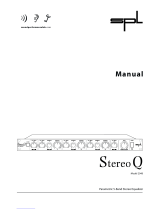 Sound Performance Lab 2048 User manual
Sound Performance Lab 2048 User manual
-
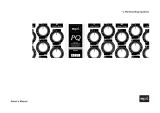 Sound Performance Lab PQ Recording Equalizer User manual
Sound Performance Lab PQ Recording Equalizer User manual
-
Sound Performance Lab PQ Owner's manual
-
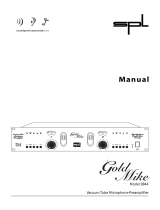 Sound Performance Lab GoldMike 9844 Owner's manual
Sound Performance Lab GoldMike 9844 Owner's manual
-
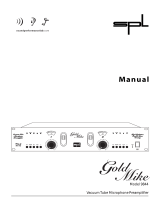 Sound Performance Lab GoldMike 9844 User manual
Sound Performance Lab GoldMike 9844 User manual
-
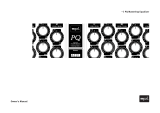 Sound Performance Lab PQ Mastering Equalizer User manual
Sound Performance Lab PQ Mastering Equalizer User manual
-
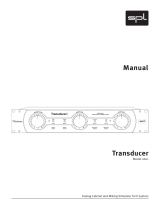 Sound Performance Lab Transducer 2601 User manual
Sound Performance Lab Transducer 2601 User manual
-
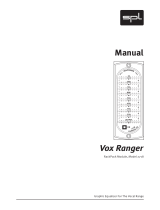 Sound Performance Lab Vox Ranger 2718 User manual
Sound Performance Lab Vox Ranger 2718 User manual
-
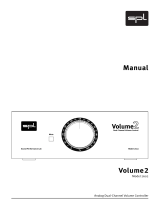 Sound Performance Lab Analog Mixer User manual
Sound Performance Lab Analog Mixer User manual
-
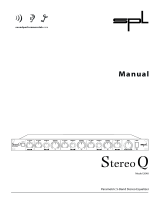 Sound Performance Lab 2048 User manual
Sound Performance Lab 2048 User manual
Other documents
-
FlowerHouse FHXUPT-GT Installation guide
-
American DJ SP1X3LUNT User manual
-
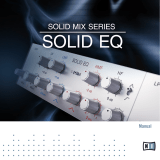 Native Instruments SOLID EQ Owner's manual
Native Instruments SOLID EQ Owner's manual
-
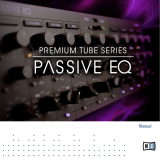 Native Instruments PASSIVE EQ Owner's manual
Native Instruments PASSIVE EQ Owner's manual
-
dbx 242 Owner's manual
-
Manley MASSIVE PASSIVE Owner's manual
-
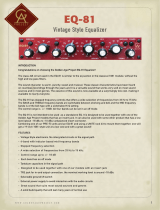 GA Project EQ-81 Quick Manual
GA Project EQ-81 Quick Manual
-
Rolls RPQ160 User manual
-
AUSTRALIAN MONITOR 1K2 Quick start guide
-
Weil-McLain CE Product information







































